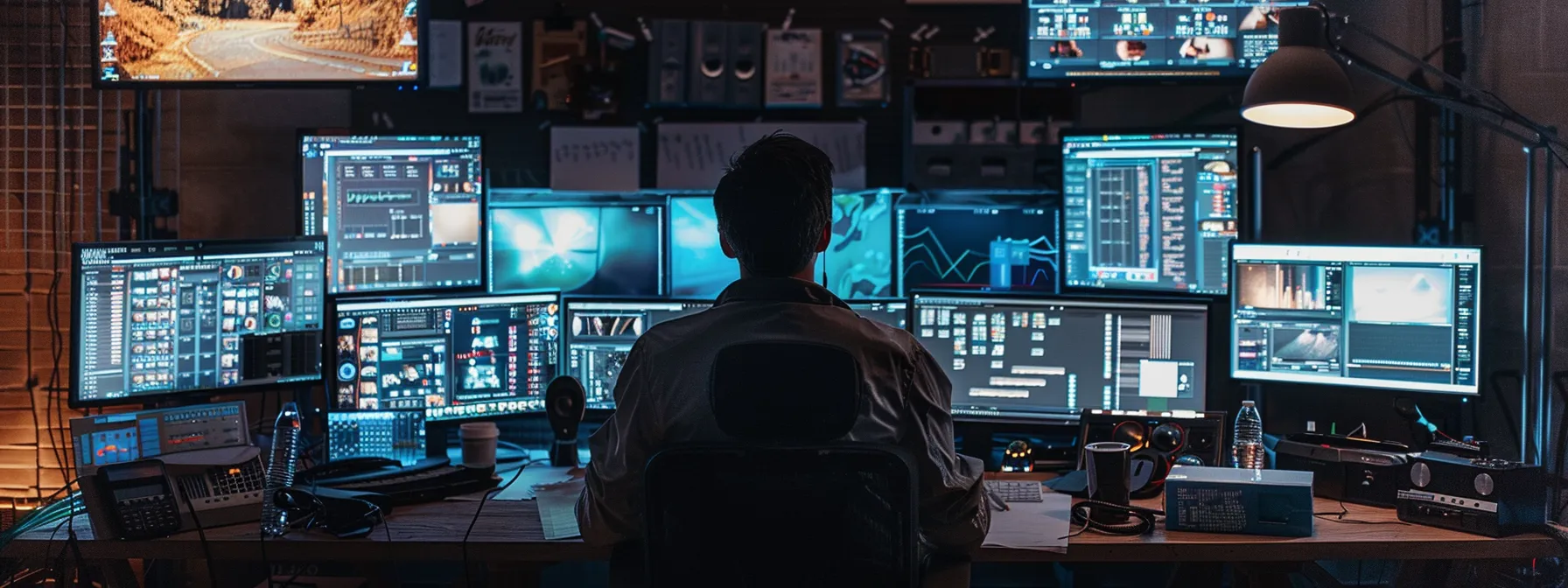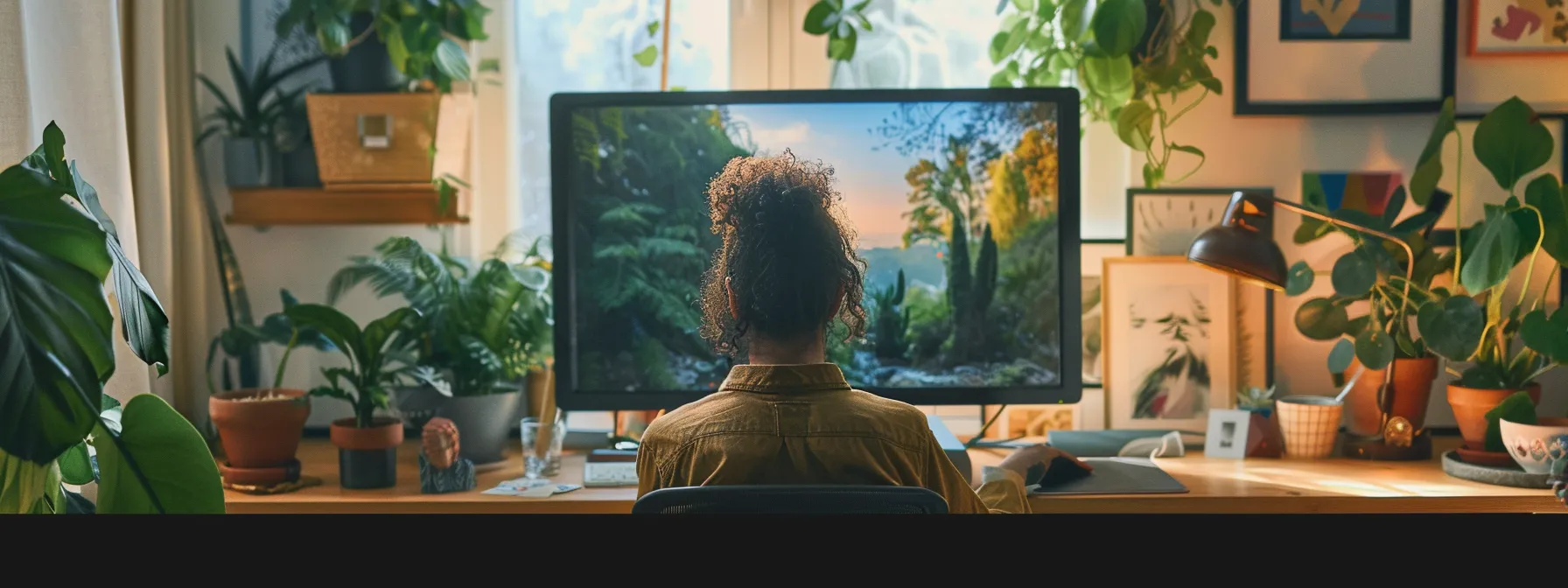Table Of Contents:
- Digital Wellbeing Strategies: Cultivating a Balanced Digital Life
- Embrace Techniques to Cultivate Your Personal Digital Wellbeing
- Recognize Your Digital Needs and Goals
- Implement Daily Screen-Time Limits
- Establish Tech-Free Zones at Home
- Schedule Regular Digital Detoxes
- Mastering the Art of Maintaining Energy in a Digital World
- Learn About Energy-Boosting Habits
- Understand the Impact of Digital Tools on Your Energy
- Identify and Manage Digital-Induced Stress
- Developing Resilience and Bounce-Back Strategies for Digital Burnout
- Recognize the Signs of Digital Burnout
- Develop and Implement Recovery Practices
- Adopt a Resilience Mindset in Your Digital Interactions
- Navigating Digital Wellbeing With Targeted Workshops & Webinars
- Discover Workshops That Align With Your Digital Goals
- Engage in Webinars for Deeper Understanding
- Apply Insights From Sessions to Your Daily Life
- Setting Healthy Boundaries to Foster Digital Wellbeing
- Define Clear Boundaries for Work and Personal Time
- Prioritize Meaningful Digital Engagement
- Promote a Balance Between Online and Offline Activities
- Creating a Conducive Digital Environment for Wellbeing
- Curate Your Digital Feeds for Positive Influence
- Declutter Your Digital Spaces Regularly
- Designate Specific Times for Email and Social Media
- Conclusion
Digital Wellbeing Strategies: Cultivating a Balanced Digital Life
In the hustle of our digital routines, balancing accessibility to online resources with our need for social connection often pushes us to move at unrelenting speeds. It’s vital to carve out a safe space online where our energy doesn’t just deplete but replenishes. Crafting a strategy for digital wellbeing is therefore not just a nice-to-have, it’s necessary for maintaining our mental and physical health in a world where screens dominate. Keep reading as we delve into strategies that will not only help you navigate the complexities of the digital realm but also empower you to create a harmonious balance that supports your overall wellbeing. Engage with actionable insights and learn to protect your energy in an interconnected world.
Embrace Techniques to Cultivate Your Personal Digital Wellbeing

In an era where technology is as ubiquitous as air, learning how to step back takes more than a simple realization; it necessitates a strategic plan, one that acknowledges your digital needs while setting the groundwork for a healthier digital life. Imagine you’re at a startup company, eager to show your value, yet aware that the constant screen time is impacting your wellbeing. It’s akin to planning a vacation – you don’t just pick a location on a whim, but rather, conduct extensive regression analysis on various destinations to ascertain the best option. Drawing on such diligence, you can craft open access to real-life interactions by implementing daily screen-time limits that don’t hinder productivity. Translating this approach to your home life, establishing tech-free zones can be the spatial equivalent of strategic planning, creating an environment conducive to focused engagement without digital disruptions. Moreover, consider adopting the habit of scheduling regular digital detoxes—an approach not unlike taking intermittent breaks for rejuvenation during an intense project. It’s about crafting a lifestyle where you control technology and not the other way around.
Recognize Your Digital Needs and Goals
Acknowledging the depth of our entanglement with technology is the first move toward achieving digital equilibrium. Over the years, I’ve conducted a systematic review of my own habits and those of others, finding parallels between unchecked device usage and other forms of addiction-like alcohol. Through this process of critical self-reflection and understanding, I’ve learned that recognizing personal digital needs and goals is tantamount to having insurance against the potential negative impacts of our increasingly connected lives.
Implement Daily Screen-Time Limits
Integrating daily screen-time restrictions has been as transformative for my wellness regimen as incorporating meditation. It’s not simply about limiting exposure; it’s a skill that requires practice and mental health support. Just as a sampler gives a taste of a full musical track, setting boundaries on the license technology holds over our time can offer a clearer picture of how to balance our digital and non-digital lives.
Establish Tech-Free Zones at Home
In my role as a blogger and a consultant, I’ve come to appreciate how human resource management often overlaps with health care, particularly in advocating for spaces that promote mental and physical well-being. Establishing tech-free zones at home – a strategy I recommend for effective time management – can significantly alleviate eye strain and prevent digital burnout. These designated areas serve as healthful havens where the mind can relax, free from the incessant demands of our connected devices.
- Review your home layout and identify potential spaces that can serve as tech-free zones.
- Discuss with family or housemates to ensure everyone understands and respects the purpose of these areas.
- Implement the tech-free zones, and observe the positive changes in your daily routine and overall well-being.
Schedule Regular Digital Detoxes
As a seasoned blogger deeply embedded in the intersection of technology and productivity, I’ve observed that regular digital detoxes are a profound tool for maintaining balance in our busy lives. These designated periods without digital devices empower employees to reconnect with the physical world, bolster problem solving acumen, and lay the groundwork for a more unbiased approach to their projects. Much like how stepping away from a challenging problem to scribble ideas on paper can bring a fresh perspective, digital detoxes help mitigate the constant stream of information that could skew reasoning and clarity.
- Decide on a realistic timeframe for your digital detox, ensuring it aligns with your work and life schedule.
- Prepare activities that are conducive to relaxation and mental resetting, such as reading, hiking, or even meditation.
- Engage team members in the conversation about digital wellbeing to cultivate a supportive work environment that recognizes the value of periodic disconnection.
As we progress on our journey to digital wellness, let’s pivot to an equally vital aspect: maintaining your energy. Mastering this art sustains your digital endeavors, keeping your motivation high and your mind sharp.
Mastering the Art of Maintaining Energy in a Digital World

In my journey through the complex intersections of technology and personal wellbeing, I’ve gleaned substantial insights into the dynamic between our digital habits and our vitality. Mastering the nuances of this relationship involves a deep dive into the language of energy-boosting routines, replete with a rich understanding of theory that illuminates the pathways to workplace wellbeing. Thriving in our modern context is less about the technology itself and more about how we engage with it—how it weaves into our organizational culture and ultimately shapes our quality of life. To strike a balance, I evaluate the impact of digital tools on my energy, remain vigilant to the ebbs and flows of my engagement, and implement sustainable measures to manage the stress that often stems from this digital immersion. These actions equip us to navigate the changing tides of our connected lives, ensuring our wellbeing remains at the forefront of our priorities.
Learn About Energy-Boosting Habits
Developing habits that encourage good mental health is pivotal for effective functioning both in our personal lives and within the workplace. Training the brain to switch between focus and relaxation, much like an athlete shifts gears during a race, not only enhances productivity but deepens our ability to practice empathy—a skill that’s particularly relevant in the context of workplace mental health in the United Kingdom. By doing so, we ensure our cognitive resources are replenished, fostering an environment where resilience and well-being can thrive.
| Activity | Impact on Wellbeing | Benefit to the Brain |
|---|---|---|
| Focused Work Intervals | Reduces burnout | Increases neural efficiency |
| Relaxation Techniques | Enhances job satisfaction | Supports cognitive restoration |
| Empathetic Communication | Improves workplace relationships | Strengthens emotional intelligence circuits |
Understand the Impact of Digital Tools on Your Energy
Recognizing how digital tools affect my energy levels has become a significant focus of my personal research. I’ve learned through randomized controlled trials and qualitative research that the continuous use of digital devices can adversely impact cognition. Consequently, incorporating periodic detoxification from technology, supported by robust data analysis, enhances my mental clarity and revitalizes my focus.
- Examine the existing data on digital device usage and cognition impacts.
- Design and conduct personalized experiments or trials to understand individual energy levels in relation to digital tool use.
- Develop a regular detoxification routine to mitigate negative effects and maintain sharp cognitive function.
Identify and Manage Digital-Induced Stress
Unraveling the intricate correlation between our online and offline behaviors has revealed to me that sleep quality often bears the brunt of digital-induced stress. In my experience, instituting mental health training that emphasizes proper sleep patterns has been a catalyst for enhanced productivity. This learning leads to the acknowledgment that managing screen time, especially before bed, is a non-negotiable component in safeguarding one’s holistic digital wellbeing.
Mastering your energy is just the beginning; encountering digital burnout is where true resilience emerges. Let’s pivot to crafting strategies that empower us to rebound with vigor.
Developing Resilience and Bounce-Back Strategies for Digital Burnout

Staring at our screens, rapidly switching between a flurry of instant messages, emails, and the latest buzz on our preferred mobile app, we occasionally lose sight of the toll this intensity takes on us. Despite the convenience, this non-stop digital engagement can lead to a state of mental and physical exhaustion broadly identified as digital burnout. In my dialogue with readers and through conducting questionnaires, I’ve discerned how vital it is to catch the early warning signs of this condition. By integrating the guidance of national health service advisories and harnessing the collaborative power of teamwork, we can outline a set of recovery practices specifically tailored to recalibrating our digital lives. And, as we continue to evolve alongside technology, cultivating a resilience mindset becomes indispensable, ensuring that we interact with digital tools in a way that supports, rather than undermines, our wellbeing.
Recognize the Signs of Digital Burnout
In the bustling heart of London, where digital consumption intertwines with every facet of work and personal life, I’ve observed a worrying trend among professionals and students alike. As a proponent of education in the psychology of technology use, I stress the importance of vigilance in spotting the early signs of digital burnout—a state often exacerbated by unmanaged task management and the relentless pace of city life. Recognizing these tell-tale symptoms: chronic fatigue, a decrease in productivity, and a perpetual sense of overwhelm, is the first step towards reclaiming our digital well-being.
- Pay close attention to any persistent feelings of tiredness that don’t recede with rest.
- Monitor your daily output and note any substantial drop in efficiency or quality.
- Be self-aware of emotions, watch for feelings of frustration or anxiety towards digital interactions.
Develop and Implement Recovery Practices
Turning to ‘Pubmed‘ for the latest scholarly articles on digital burnout, I enrich my understanding of how various cultures are adapting recovery methods. It’s becoming clear that our smartphones need to be tools for efficiency, not a source of constant distraction; therefore, I ensure my phone‘s usage is intentional, limiting passive scrolling and reallocating time towards meaningful, restorative activities.
Adopt a Resilience Mindset in Your Digital Interactions
To cultivate resilience within our digital interactions means to create a buffer, a sort of mental security that cushions the adverse effects that arise from the digital sphere. I approach this by fostering a proactive conversation about digital boundaries within my community, which acts as a figurative window through which we can observe and adjust our engagement with technology. At the core, resilience is about being as robust as the electron – ever present and vital, yet never overwhelmed by its surroundings.
- Initiate and sustain open dialogues on the importance of digital boundaries within personal and professional communities.
- Utilize insights from these conversations as a window to reflect on and modify personal digital practices.
- Adopt and reinforce mental security measures to endure the challenges presented by an interconnected digital existence.
Overcoming digital burnout is a victory in itself, but sustaining that newfound balance is where the real challenge lies. Enter the dynamic world of targeted workshops and webinars, your toolkit for crafting a resilient digital wellbeing strategy.
Navigating Digital Wellbeing With Targeted Workshops & Webinars

As I immerse myself further into the journey of fostering digital wellbeing, I’ve found that attending skillfully curated workshops and webinars is instrumental in transforming my attitude towards digital consumption. These educational endeavors, when thoughtfully selected, resonate with my management skills and align perfectly with the broader objectives I have set for my digital health. They offer a practical roadmap, enriched with the latest insights from England‘s evolving digital health landscape. Engaging in these sessions provides not just theoretical knowledge but also hands-on strategies that I can apply directly to my life, carving out a balanced approach to my digital interactions that prioritizes both efficiency and well being.
Discover Workshops That Align With Your Digital Goals
Delving into workshops that bolster awareness around the digital landscape, I strive to find programs that mirror my commitment not just to professional growth but to personal well-being. One particularly refreshing workshop examined the impact of social media on our headspace and relationships, drawing parallels with how a marriage requires constant attention to flourish. Another insightful session shed light on how technological advancements are reshaping recruitment processes, emphasizing the need to stay adaptive and informed in a rapidly evolving job market.
Engage in Webinars for Deeper Understanding
Participating in webinars serves as a catalyst for deeper comprehension and engagement with the principles underlying digital wellbeing. These virtual sessions offer invaluable training for navigating the complexities of maintaining mental health while optimizing employee engagement in our digital world. They bridge the gap between professional development and personal leisure, fostering a balanced lifestyle fortified by insight and practical guidance.
- Seek out webinars focusing on the integration of mental health and employee engagement.
- Implement the training and strategies learned within your personal and professional routine.
- Apply the insights to support a harmonious blend of work, leisure, and digital wellbeing.
Apply Insights From Sessions to Your Daily Life
After my recent evaluation of a pertinent session, I integrated strategies to support emotional wellbeing into my daily regime, recognizing the diverse needs across gender in our industry. Prioritizing mental health, especially in the era of remote work, has become a non-negotiable aspect of my personal development plan, ensuring I stay attuned not just to my professional growth but to my holistic health as well.
Delving into targeted workshops and webinars equips us with the tools for a balanced digital life. Next up, let’s uncover how to cement these tools into daily practice by setting healthy boundaries.
Setting Healthy Boundaries to Foster Digital Wellbeing

In our digitally driven existence, it’s imperative to draw distinct lines between our professional obligations and the sanctuaries of our personal lives. I’ve learned through integrating concepts from psychotherapy into my daily practices, that establishing solid delineations for work and personal time not only manages workload but nurtures a sense of gratitude towards life’s rhythms. Embracing meaningful digital engagement enhances the quality of our interactions, fortifying relationships and fostering genuine collaboration. These established confines allow for a balanced approach that serves our well-being and sustains our income potential. Rather than being engulfed by the digital tide, prioritizing our offline experiences ensures we remain anchored in a world that values presence over perpetual connectivity.
Define Clear Boundaries for Work and Personal Time
In shaping my life’s structure, particularly against the demands of relentless connectivity, I earmark moments for a digital detox as a non-negotiable in my daily routine. This deliberate demarcation furnishes me with the space to step away from work, allowing me to immerse in experiences unencumbered by the digital leash that employment so easily becomes. Embracing techniques I’ve gleaned from my project management background, I delineate and adhere to these boundaries with precision, crafting a sanctuary of time that is steadfastly my own.
Prioritize Meaningful Digital Engagement
To truly benefit from the connectivity the internet affords, I make a conscious decision to engage in platforms that offer more than momentary distraction. Purpose-driven use of apps, for instance, can unlock avenues of mentorship and learning, rather than mere entertainment. By doing so, I enhance my knowledge base, foster meaningful relationships, and stave off the anxiety commonly associated with aimless digital consumption.
- Identify apps and online platforms that align with educational and professional development goals.
- Engage with these digital tools to seek mentorship opportunities and expand learning horizons.
- Monitor the emotional impact of online interactions to ensure they contribute positively to mental wellbeing.
Promote a Balance Between Online and Offline Activities
The strategy to harmonize our digital engagements with offline pursuits is particularly significant in a post-pandaemic world where the lines between work and home life are blurred. My organization strategy is simple yet effective: designate time slots that are strictly for offline activities like taking a walk or reading a book — this ensures these essential aspects of entertainment and wellbeing are treated with the same importance as our digital tasks.
| Time of Day | Online Activity | Offline Activity |
|---|---|---|
| Morning | Check emails and plan the day | Meditation or exercise |
| Afternoon | Attend virtual meetings | Lunch without screens |
| Evening | Social media check-in | Quality time with family or self-care routine |
Now that we’ve established the necessity of setting strong personal boundaries for our digital wellbeing, let’s pivot to shaping the spaces around us. Constructing a digital environment that promotes wellness is our next pivotal step.
Creating a Conducive Digital Environment for Wellbeing

Enabling a balanced digital lifestyle extends beyond occasional disconnections; it requires an intentional architecture of our digital environments. By curating our digital feeds, we allow only data and content that exert a positive influence on our mood and frame of mind to populate our screens, effectively building coping mechanisms against the digital overwhelm. Regularly decluttering our digital spaces also plays a pivotal role, reducing digital noise and thereby refining the employee experience. Moreover, designating specific times to engage with email and social media can transform our relationship with technology from reactive to proactive, affording us a greater sense of control and contentment in our online interactions.
Curate Your Digital Feeds for Positive Influence
In my pursuit of efficiency and mental wellbeing, I emphasize the critical nature of curating digital feeds. By selecting the information I consume, I skip the clutter and negativity that can hinder a team‘s dynamic and individual focus. This conscious filtration ensures that my digital interactions are a source of inspiration and constructive thought, contributing positively to my professional environment and personal peace.
Declutter Your Digital Spaces Regularly
The methodology I’ve fostered for maintaining digital wellbeing draws from recommendations by entities like the World Health Organization, acknowledging the psychological impacts of our technology laden routines. My approach is rooted in the concept that a decluttered digital space can significantly reduce the cognitive fatigue that comes from sifting through a barrage of unnecessary emails, apps, and notifications. Thus, I make it a practice to regularly purge and organize my digital files, ensuring a streamlined and more efficient online experience.
Designate Specific Times for Email and Social Media
Establishing specific times to check my mobile phone for emails and social media has been akin to administering a dose of medicine for my digital well-being. Treating these digital check-ins as scheduled appointments helps me maintain focus on immediate tasks, minimizes distraction, and aligns perfectly with my goal to craft a more productive day. This regimented practice affords me the mental space to concentrate deeply, ultimately leading to the creation of more insightful articles and content.
- Identify the times of day when engagement with mobile phone and social media is most beneficial and least disruptive.
- Set clear boundaries to check emails and social platforms only during these predefined slots.
- Stick to this schedule rigorously, treating these time slots as non-negotiable appointments.
Conclusion
Digital wellbeing strategies are indispensable for maintaining balance in our hyperconnected existence, acting as safeguards against the detrimental effects of constant digital engagement. By setting boundaries, such as daily screen-time limits and tech-free zones, we promote mental health and prevent burnout, improving our focus and enhancing personal relationships. Regular digital detoxes and thoughtful engagement with technology allow us to manage stress and cultivate resilience, ensuring we use digital tools to support rather than diminish our wellbeing. Ultimately, these practices empower us to harness the benefits of technology while preserving our energy and fostering a fulfilling offline life.





